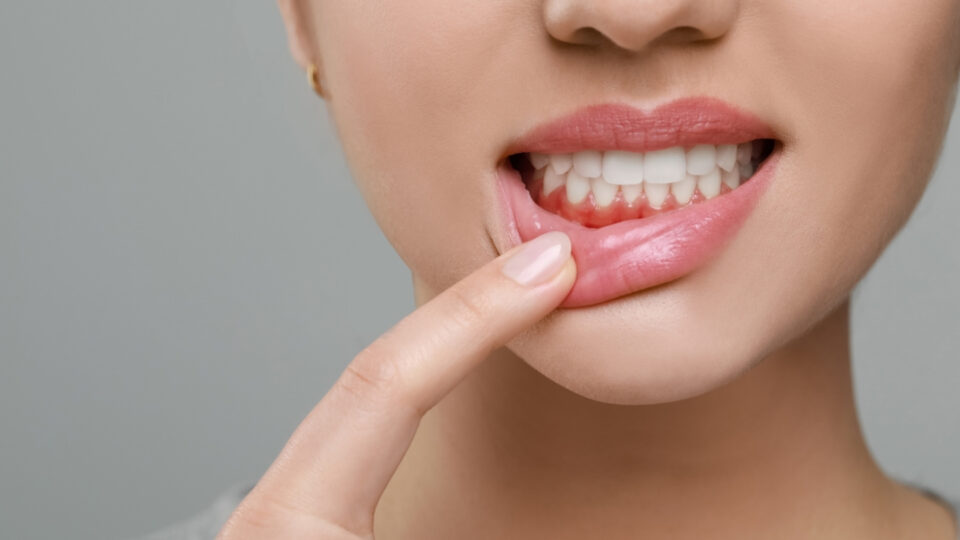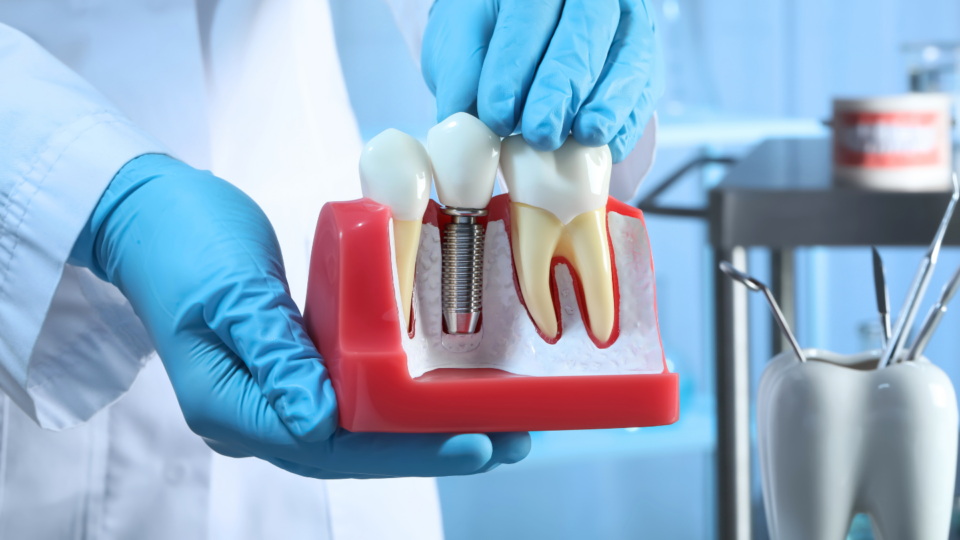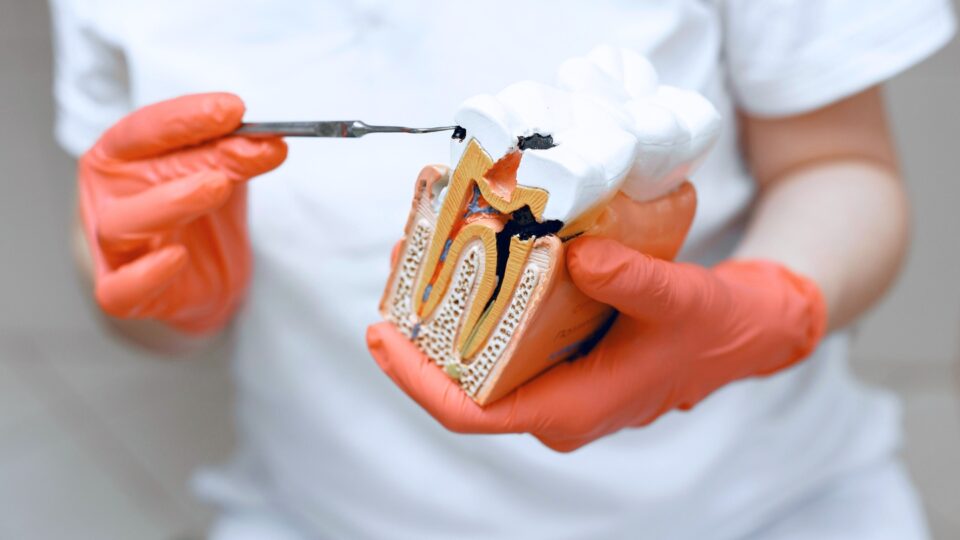How Does a Dentist Extract a Tooth? A Step-by-Step Guide
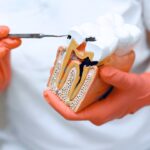
The 5 Stages of Tooth Decay — and How to Stop It Early
August 21, 2025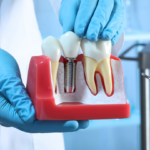
Dental Implants – Complete Guide for Patients in Charlotte
September 15, 2025How Does a Dentist Extract a Tooth? A Step-by-Step Guide
 Dr. Prashant Rao, DDS, a Charlotte native and NYU-trained dentist, specializes in esthetics, dental implants, and preventative dentistry.
Dr. Prashant Rao, DDS, a Charlotte native and NYU-trained dentist, specializes in esthetics, dental implants, and preventative dentistry.
Tooth extractions are one of the most common dental procedures—but also one of the most misunderstood. Patients often ask us: How does a dentist actually pull a tooth? Is it painful? How much does it cost?
At Cedar Walk Family and Cosmetic Dentistry in Charlotte, we want you to feel confident, prepared, and cared for if you ever need an extraction. This guide explains the process step by step, including types of extractions, when they’re needed, recovery tips, and what to expect at every stage.
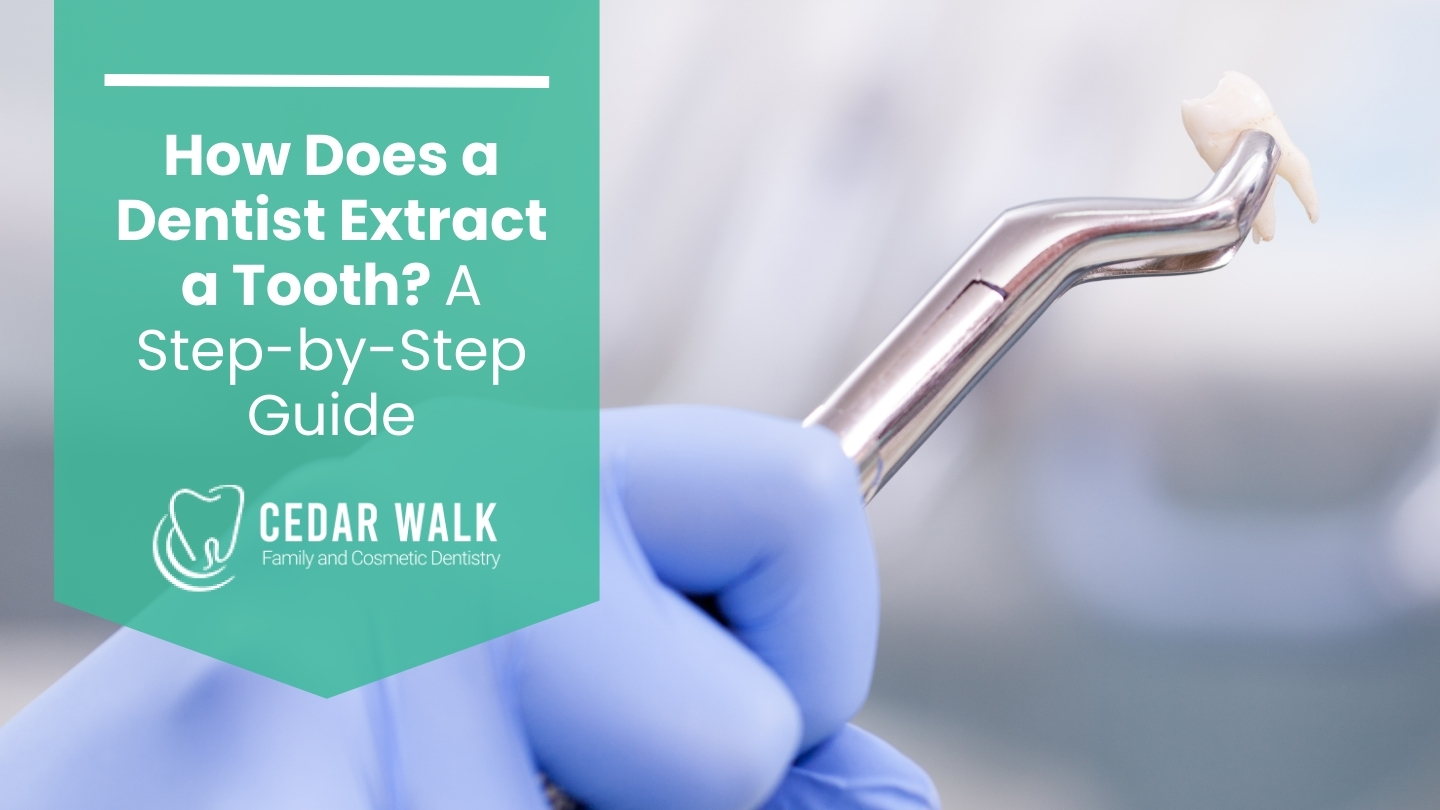
Why You May Need a Tooth Extraction
Not every problem tooth can be saved. Extractions are recommended when:
- Severe decay or infection has destroyed too much tooth structure
- Impacted wisdom teeth cause pain, crowding, or infections (read our guide to wisdom teeth)
- Advanced gum disease weakens the bone supporting the tooth
- Trauma or fracture leaves the tooth unrestorable
- Failed root canal teeth no longer function properly (see when to save or remove a root canal tooth)
Types of Extractions: Simple vs. Surgical
The method your dentist recommends depends on the condition of your tooth:
Simple Extraction
- Used when the tooth is visible above the gumline
- Dentist loosens the tooth with an elevator and removes it with forceps
- Performed with local anesthesia, usually quick and minimally invasive
Surgical Extraction
- Required when a tooth is broken at the gumline, impacted, or has multiple roots
- Dentist makes a small incision in the gum and may remove bone to access the tooth
- May involve stitches and a slightly longer recovery period
Step-by-Step: How a Dentist Extracts a Tooth
Here’s what to expect at Cedar Walk Dentistry:
- Consultation & X-rays – We evaluate the tooth and surrounding bone to determine if extraction is the best option.
- Anesthesia – Local anesthesia numbs the area completely. For complex cases, sedation options may also be available.
- Loosening the Tooth – Elevators are used to gently rock the tooth and expand the socket.
- Extraction – For simple cases, the tooth is removed whole. For surgical cases, it may be sectioned and removed in pieces for comfort.
- Site Care – The socket is cleaned, and stitches may be placed to help healing. Gauze is applied to control bleeding.
What About Extracting a Root Canal Tooth?
Root canal therapy can save a tooth, but sometimes extraction is still needed later. Reasons may include:
- Deep cracks or fractures
- Recurrent infection
- Severe bone loss around the tooth
In those cases, extraction protects your health and makes way for a replacement option such as a dental implant or bridge.
Recovery and Aftercare
Most patients recover smoothly with the right care. Common guidelines include:
- Control swelling & discomfort – Use cold compresses in the first 24 hours and prescribed or OTC pain relievers as directed.
- Protect the blood clot – Avoid drinking through a straw, spitting forcefully, or smoking for several days.
- Soft foods – Stick to yogurt, mashed potatoes, and smoothies before easing back into solid foods.
- Gentle hygiene – Brush carefully around the site and rinse with warm salt water after 24 hours.
- Follow-up – Attend scheduled checkups to monitor healing.
Healing typically takes 1–2 weeks for most extractions, with full bone healing over several months.
How Much Does a Tooth Extraction Cost in Charlotte?
The cost of a tooth extraction depends on complexity, anesthesia, and tooth location:
- Simple extraction: $75–$200 per tooth
- Surgical extraction: $150–$600 per tooth
- Wisdom tooth removal: $120–$800 per tooth
Most dental insurance covers medically necessary extractions, but out-of-pocket costs vary. At Cedar Walk Dentistry, we review your benefits in advance and offer flexible payment options.
FAQs About Tooth Extractions
Is it painful?
The procedure itself is not painful thanks to local anesthesia. Some soreness after is normal, but it’s manageable with medication and care.
How long does recovery take?
Initial healing usually takes 7–10 days, though complete healing of the socket may take several weeks.
What if I don’t replace the tooth?
Missing teeth can cause shifting, bite changes, and bone loss. Options like dental implants can restore function and protect your smile.
What if I’m nervous about the procedure?
We offer sedation options and gentle, patient-centered care to make the experience as stress-free as possible.
Tooth Extractions in Charlotte: Schedule Your Consultation
If you’re experiencing pain, infection, or believe you may need a tooth pulled, don’t wait. At Cedar Walk Family and Cosmetic Dentistry, we provide gentle, precise extractions with advanced technology and compassionate care.
Serving Charlotte and Ballantyne families with comprehensive dental services.
Contact us today to schedule your consultation and get relief with confidence.
Practice Recognitions
Recent Posts
- Dental Hacks to Protect Your Teeth and Gums in 2025
- Top 5 Foods for Healthy Gums
- Itchy Gums and Gum Health: Causes, Treatment, and Prevention
- Dental Implants – Complete Guide for Patients in Charlotte
- How Does a Dentist Extract a Tooth? A Step-by-Step Guide
- The 5 Stages of Tooth Decay — and How to Stop It Early
- How to Know If You Need a Root Canal or Endodontic Surgery
- Dental Implants vs. Bridges: Which Tooth Replacement Is Right for You?
- Who is a Good Candidate for Invisalign Treatment?
- Invisalign vs. Braces: Pros & Cons


